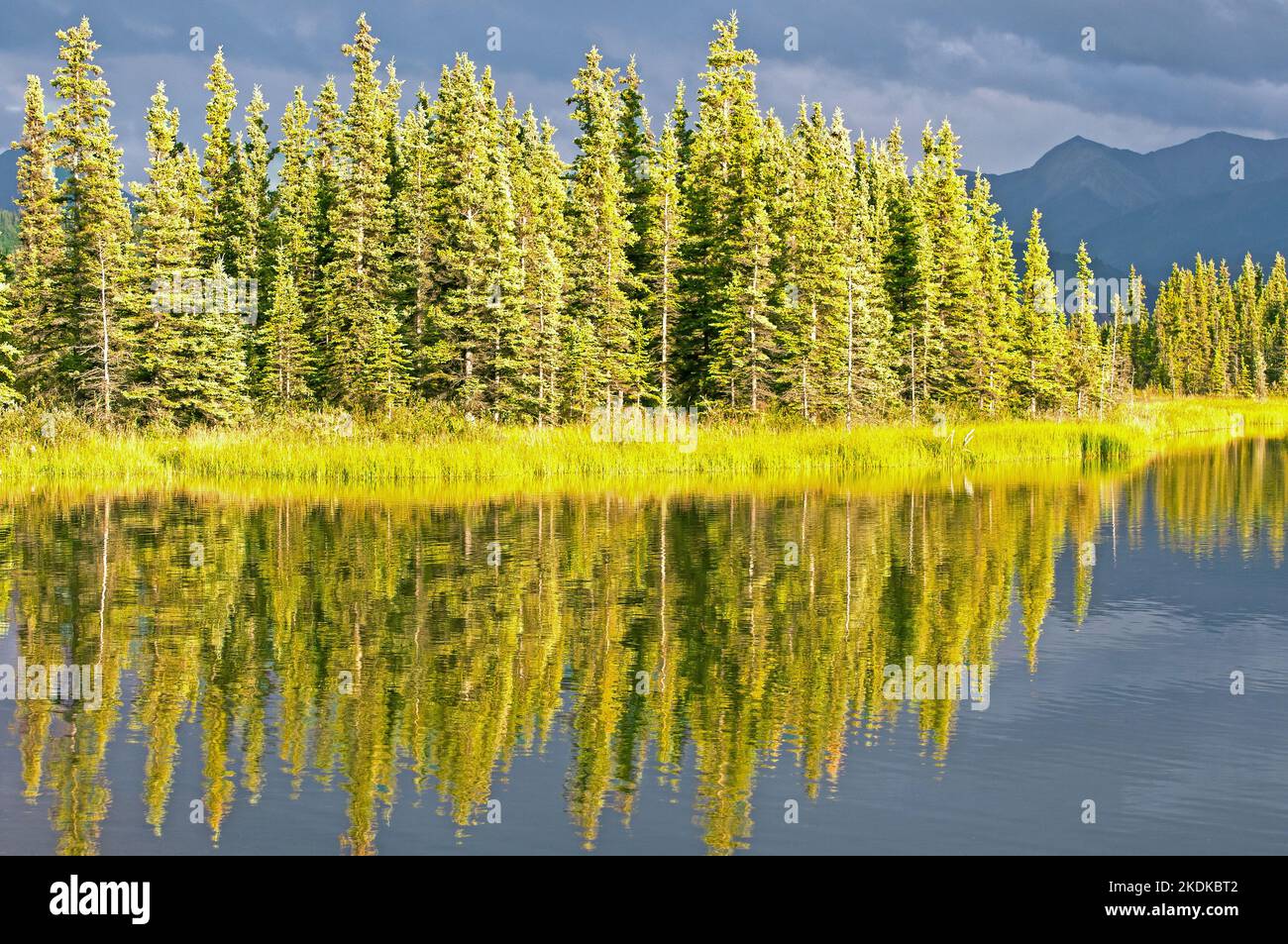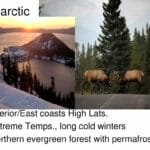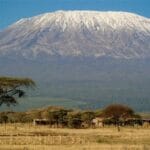Hey there, nature lovers and curious minds! Let’s dive into the fascinating world of subarctic evergreen forests, often called the taiga. Picture a vast green belt circling the top of our planet, home to towering evergreen trees, wild animals, and a whole lot of ecological goodness. Get ready for an adventure as we explore this amazing ecosystem, unravel its secrets, and discover why it’s one of the most important places on Earth.
Exploring Earth’s Resilient Taiga
Journey with us to the top of the world, where the air is crisp, the ground often wears a blanket of snow, and towering evergreen trees stand as silent guardians. This is the taiga, a vast expanse of forest stretching across North America, Europe, and Asia, known for its remarkable resilience in the face of long, harsh winters and short, cool summers.
Dominated by coniferous trees like spruce, fir, and pine, the taiga’s iconic evergreen needles minimize water loss, allowing them to photosynthesize even during the colder months. But it’s not just a sea of green – deciduous trees like birch and aspen add vibrant color, especially during the fall.
The taiga’s importance extends far beyond its beauty. These forests act as giant carbon sinks, absorbing enormous amounts of carbon dioxide from the atmosphere and releasing oxygen – a process known as photosynthesis. This helps regulate the Earth’s climate and ensures we have clean air to breathe
Their crucial role doesn’t end there. The taiga also regulates water cycles, preventing floods and droughts, and provides shelter and sustenance to a diverse array of plants and animals. Life in this biome is tough, leading to fascinating adaptations. Coniferous trees, with their needle-like leaves and conical shapes, excel at shedding snow and conserving water. Then there are the animals – majestic moose, caribou with their impressive antlers, and cunning wolves – all adapted to the cold with thick fur coats and unique ways of finding food, even when temperatures plummet.
However, these incredible ecosystems face growing threats. Climate change, with rising temperatures and altered precipitation patterns, stresses the taiga. Deforestation for timber and resource extraction disrupts these delicate ecosystems. The increase in wildfires due to a warming climate poses another danger, putting these carbon-storing forests at risk.
Protecting the taiga is crucial, not just for the sake of the plants and animals that call it home, but for the health of the entire planet.
Here are some ways we can help:
- Establishing protected areas within the taiga, where human activities are limited, can help conserve these forests.
- Promoting sustainable forestry practices is another important step. This means harvesting timber responsibly and planting new trees to replace those that are cut down.
- Tackling the root cause of climate change is paramount. Reducing greenhouse gas emissions through global efforts is vital to ensuring the long-term survival of these precious ecosystems.
The taiga isn’t just a vast and silent forest; it’s a treasure trove of biodiversity and cultural significance. Indigenous communities have lived in harmony with the taiga for centuries, and their traditional knowledge holds invaluable insights into the management and conservation of these forests. By learning from their deep understanding of the land, we can better protect this vital ecosystem for generations to come.
Scientists are still unraveling the mysteries of this vast biome, exploring its biodiversity, its role in global climate regulation, and the impacts of human activities. There’s still much to learn, and future research will undoubtedly reveal even more about the complexity and importance of these forests.
Exploring Different Names for Subarctic Evergreen Forests
You might be surprised to know that subarctic evergreen forests have a couple of different names. While “subarctic evergreen forests” is common in everyday conversation, scientists and nature enthusiasts often use the terms “taiga” or “boreal forest.” They’re basically interchangeable, though “taiga” is the more official term you’d likely find in a textbook.
Unpacking the Term “Subarctic Zone of Evergreen”
We’ve established that the subarctic zone of evergreen trees has a few different names – you might know it as the taiga, or maybe the boreal forest. Whatever you call it, this area is basically a massive belt of evergreen trees circling around the top of the globe. We’re talking North America, Europe, Asia – it’s huge! In fact, it’s actually the biggest biome on land anywhere on Earth.
So, what makes it so special? Picture a place where winter seems to last forever. Okay, maybe not forever, but it definitely feels that way sometimes. The taiga is known for its super long, freezing winters and short, cool summers. This extreme climate means only certain types of plants and animals can survive there, and evergreen conifers are the real champions of this environment.
Why conifers? Think about their needles – those aren’t your average leaves. They’re designed to survive the cold. Their small surface area and waxy coating mean they don’t lose much water through transpiration, which is vital when everything is frozen solid. Plus, their cone shape helps them shed heavy snow so they don’t get crushed.
But the taiga isn’t just about trees, even though they are the stars of the show. Underneath those towering conifers, you’ll find a whole other world of plants – shrubs, mosses, lichens, even berries. And where there are plants, there are animals. The taiga is home to some pretty iconic creatures that are built for the cold: think caribou migrating across snowy plains, wolves hunting in packs, and bears lumbering through the trees.
The taiga’s importance goes way beyond just being a home for cool plants and animals, though. It’s like a giant lung for the planet, sucking up carbon dioxide from the atmosphere and storing it in those massive trees. This process helps to slow down climate change. Plus, it helps to regulate water cycles, making sure that things stay balanced across the globe.
Unfortunately, even this vast and mighty ecosystem is facing some serious challenges. Climate change is messing with the taiga’s delicate balance, with warmer temperatures leading to more forest fires and changes in wildlife populations. On top of that, deforestation from logging and mining is destroying habitats and fragmenting the forest, making it harder for animals to move around and survive.
The good news is that people are working hard to protect the taiga. There are efforts to promote sustainable forestry practices so we can use the forest’s resources without destroying it. Conservation groups are working to create protected areas where logging is restricted. And indigenous communities, who have lived in harmony with the taiga for centuries, are sharing their knowledge and traditions to help protect this vital ecosystem.
The taiga might seem like a world away, but what happens there affects us all. By understanding its importance and supporting efforts to protect it, we can help ensure that this incredible forest continues to thrive for generations to come.
Understanding the Synonyms for “Subarctic Forest”
So, we’ve been talking about these incredible forests that stretch across the top of the world, just below the Arctic Circle, right? These massive forests, filled with evergreen trees, are known by a few different names depending on where you are. But if you’re looking for a single word that everyone recognizes, taiga is the one. This term, borrowed from Russian, has become the go-to name for this specific type of forest in the scientific community and beyond.
Think of the taiga as the king of the subarctic region. Why? Because it’s the most common type of forest you’ll find there. This dominance comes from the remarkable ability of its evergreen coniferous trees – think spruces, firs, and pines – to thrive in the often-brutal cold. These trees are practically built for the cold. Their needle-like leaves help them hold onto precious water, especially important when the ground is frozen, and their cone-shaped branches allow snow to slide off easily, preventing damage from heavy snowfalls.
Now, you might also hear people refer to these forests as boreal forests, which simply highlights their northern location – “boreal” basically means “northern.” And then there are terms like snowy woods or northern woodlands, which paint a pretty clear picture, don’t they? These names capture the essence of the subarctic, evoking images of vast, snowy landscapes covered in dense forests.
It’s worth remembering that these forests, whatever we call them, aren’t just pretty scenery. They play a vital role in regulating our planet’s climate and provide a home to a remarkable variety of plants and animals.
Key Points about Subarctic Evergreen Forests (Taiga):
- Vast expanse of forests stretching across northern North America, Europe, and Asia.
- Characterized by harsh winters and short, cool summers.
- Dominated by coniferous trees (spruce, fir, pine) with evergreen needles for water conservation and year-round photosynthesis.
- Deciduous trees (birch, aspen) add color, especially in fall.
- Serve as carbon sinks, absorbing CO2 from the atmosphere.
- Regulate water cycles, prevent floods and droughts.
- Support a diverse array of plants and animals, including iconic species like moose, caribou, and wolves.
- Coniferous trees have adaptations for shedding snow and conserving water.
- Animals have thick fur and unique ways of finding food in cold conditions.
- Threatened by climate change, deforestation, and wildfires.
- Conservation efforts crucial, including protected areas and sustainable forestry practices.
- Indigenous communities have valuable traditional knowledge for forest management.
- Ongoing scientific research continues to unravel the mysteries of the taiga.
- SYBAU See You Baby Meaning: Gen Z Slang Evolves - July 1, 2025
- Unlock Your Inner Youth: Lifestyle Secrets for a Vibrant Life - July 1, 2025
- Decode SYBAU Meaning: Gen Z Slang Explained - July 1, 2025







1 thought on “The Ultimate Guide to Subarctic Evergreen Forests: Unveiling the Taiga”
Comments are closed.